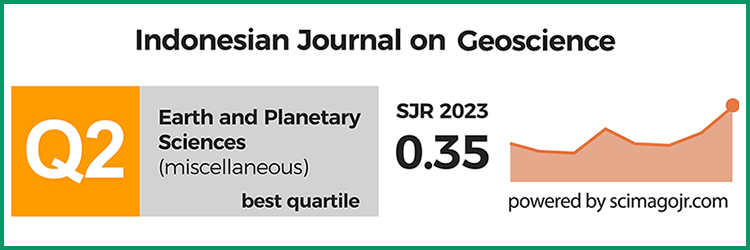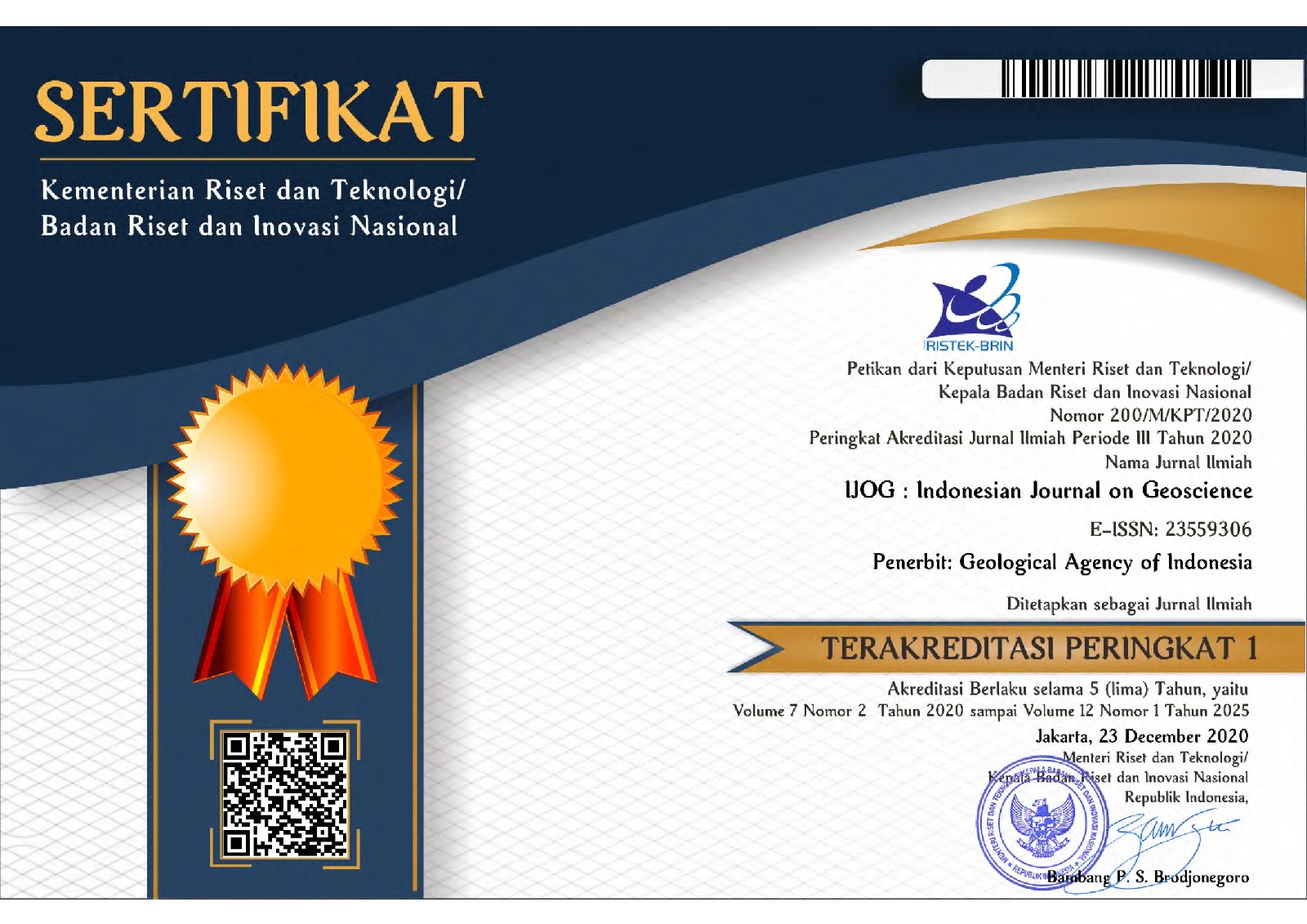Tinjauan terhadap tailing mengandung unsur pencemar Arsen (As), Merkuri (Hg), Timbal (Pb), dan Kadmium (Cd) dari sisa pengolahan bijih logam
DOI:
https://doi.org/10.17014/ijog.1.1.31-36Keywords:
pollution on environment, tailing, ore processingAbstract
https://dx.doi.org/10.17014/ijog.vol1no1.20064a
When tailing of a mining activity is discharged into either landscape or river body, the pollutan element wastes are possible to disperse within those areas and may cause pollution on environment. The environment pollution hazards of arsenic (As), mercury (Hg), lead (Pb) and cadmium (Cd) probably occurred if tailing with the content of those elements is not handled properly. Particularly in the tropical regions, higher rates of chemical weathering and bio-chemical activity will contribute a rapid mobilization of the most potentially toxic elements.
One of adverse health effects from arsenic to human life is in the case of arsenic-contained drinking waters exceed the threshold limit value. As a result, it will create chronic symptoms of toxicity within the human body such as gastro-intestinal irritation, nerve damage and tissue wastage.
Tailing originated from amalgamation processing of gold ore enables its mercury waste to disperse in the vicinity of mining area and may form environment pollution by either organic or inorganic mercury. The pollution would be more hazardous to human health if mercury element in the water body transform biochemically into a compound of methylmercury. There is a variety of mechanisms by micro-organism which can bring about the formation of the very toxic methylmercury species, particularly with regard to its uptake by fish. Effects to the human health from the organic mercury include the blood-brain barrier and upsetting the metabolism of the nervous system. Whilst the main toxic effect of inorganic mercury is disruption the functions of kidneys and liver within human body.
Most mining activity of base metal may discharge tailing with a significant lead (Pb) content. Lead is a cumulative poison, hence absorbing this element by human body with particularly exceeding its threshold limit value will bind strongly to a large number of molecules such as amino acids, haemoglobin, many enzymes, RNA and DNA. Then it will bring into disruption of many metabolic pathways, blood hypertension, hyperactivity and brain damage.
Problems of cadmium could arise from a lead-zinc mining and smelting operation, from where pollution due to cadmium-contained tailing with additional aerial pollution associates with cadmium-contained fumes and particles. The toxic effects of cadmium to human health are suffering from lumbago-type pains, bone damage with multiple fractures of the softened bones and kidney failure.
References
Coates, D.R., 1981. Environmental geology, John Wiley & Sons, New York, 701 pages.
Dasch, E.J., 1996. Encyclopedia of Earth Sciences, Vol. 2, Macmillan Reference USA, Simon & Schuster Macmillan and Prentice Hall International, London, p. 565 – 1273.
Dietrich, R.V.; Dutro Jr., J.T. and Foose, R.M.; 1982. AGI Data Sheets for Geology in the field, laboratory and office, America Geological Institute, 61 pages.
Jensen, M.L. and Bateman, A.M.; 1981. Economic Mineral Deposits, Third Edition, John Wiley & Sons, New York, 593 pages.
O’Neill, P.; 1994. Environmental Chemistry, Second edition, Chapman & Hall, London, 268 pages.
United Nations, 1995. Economic And Social Commission For Asia And The Pacific: Mineral Recovery, Recycling, Waste Prevention And Confinement For Sustainable Development In Asia And Pacific Region; New York, 179 pages.
Uvarov, E.B. and Isaacs, A.; 1986. Dictionary of Science, Sixth Edition, Penguin Books, 468 pages.
Wills, B.A., 1989. Mineral Processing Technology – An Introduction to the Practical Aspects of Ore Treatment and Mineral Recovery, Maxwell Macmillan International Editions, 785 pages.



















